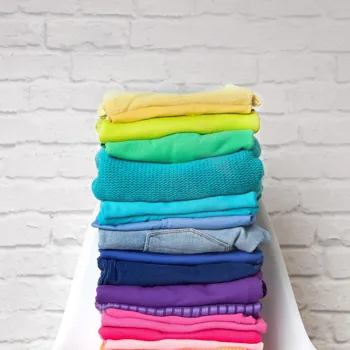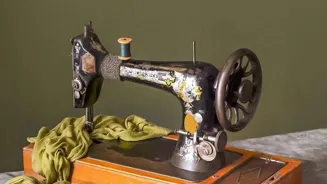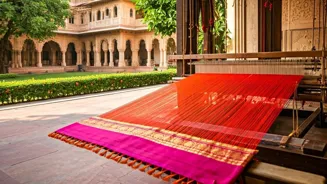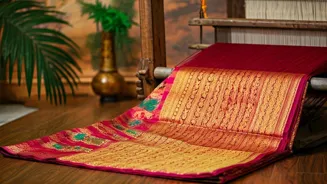Discover the secrets to a longer wardrobe life with these 8 essential tips. Extend your clothes' lifespan and keep them looking fresh for years to come. Read on to unlock the key to sustainable fashion
care
In a country like India, where festivals abound and celebrations are a way of life, our wardrobes often reflect this vibrancy. From colourful sarees to intricately embroidered kurtas, our clothes hold a special place in our hearts (and our cupboards!).

But keeping these cherished garments looking their best requires a little bit of know-how. Fast fashion may be tempting, but investing in quality pieces and caring for them properly is not only economical but also more sustainable.
So, let's dive into eight simple yet effective tips to help you extend the life of your clothes and keep them looking as good as new for years to come.
Read the Label: Your Garment's Best FriendBefore you even think about tossing your new clothes into the washing machine, take a moment to read the care label. These little tags are packed with vital information about the fabric composition and recommended washing instructions. It will tell what's best for the clothing that will take care and maintain the fabric of the cloth. Ignoring these instructions could lead to shrinkage, fading, or even damage to the fabric. Pay close attention to symbols indicating washing temperature, drying methods, and ironing recommendations. Decoding these symbols might seem daunting at first, but there are plenty of handy charts available online that can help you decipher their meaning. Consider washing instruction of various brands of detergents that you use at home. It would be even better to write them down with your clothing. Reading and following the instructions will save us a lot of our costs.
Sort Your Laundry: Divide and Conquer
Sorting your laundry isn't just about separating whites from colours. It's about preventing dye transfer, avoiding lint buildup, and protecting delicate fabrics.
Ideally, you should separate your clothes into at least three categories: whites, lights, and darks. For items that are heavily soiled or prone to bleeding dye, consider washing them separately altogether.
Additionally, separate delicate items like lingerie or silk scarves from heavier garments like jeans and towels to prevent damage. Zips should also be closed for a smooth fabric for washing. Sorting your laundry can increase the life of your wardrobe.
Gentle washing preserves fabric quality, choose mild detergents, and proper cycles
When it comes to washing your clothes, gentleness is key. Harsh detergents and aggressive washing cycles can strip fabrics of their colour and cause them to wear out faster. Opt for a mild detergent specifically designed for the type of fabric you're washing.

Most modern washing machines come with a variety of wash cycles, including delicate and hand-wash options. Choose the appropriate cycle for your garments and avoid overcrowding the machine, as this can prevent clothes from being cleaned properly.
Always remember that over washing clothes will result in bad fabric in the wrong time span. Wash them if they are dirty or stained so that you can use them longer. Regular gentle washing is highly recommended.
Air Drying: Nature's Gift to Your ClothesWhile tumble dryers are convenient, they can be quite harsh on clothes. The high heat can cause shrinkage, fading, and damage to delicate fibres. Whenever possible, opt for air drying your clothes instead. Hang them on a clothesline or drying rack in a well-ventilated area, away from direct sunlight, which can cause colours to fade. For delicate items, lay them flat on a clean towel to prevent stretching. Air drying not only prolongs the life of your clothes but also saves energy and reduces your carbon footprint. Always keep a note that direct exposure to sun will damage the fibre and cause the colour to fade away. Iron with Care: Smooth Moves for a Polished LookIroning is an essential part of maintaining a polished appearance, but it's important to do it correctly to avoid damaging your clothes. Always check the care label for ironing instructions and use the appropriate heat setting for the fabric you're ironing. Use a clean iron and ironing board to avoid transferring dirt or stains onto your clothes. For delicate fabrics like silk or rayon, use a pressing cloth to protect them from direct heat. Remember to iron in the direction of the fabric grain to prevent stretching or distorting the fibres. Ironing is a technique and with practice it becomes easy. Storage Solutions: A Home for EverythingHow you store your clothes can have a significant impact on their lifespan. Store clothes in a cool, dry place away from direct sunlight and humidity. Use padded hangers to prevent shoulder bumps and creases. For delicate items like sweaters and knitwear, fold them carefully and store them in drawers or on shelves to prevent stretching. Consider using garment bags to protect your clothes from dust, moths, and other pests. Remember to empty pockets before storing clothes to prevent damage from forgotten items. Storing clothes in a proper manner is essential, as some delicate materials damage themselves due to friction with other materials. Proper storage is essential for longer lasting wardrobe. Spot Cleaning: Act Fast, Save the DayAccidents happen, and when they do, it's important to act fast to remove stains before they set. Keep a stain remover handy and treat stains as soon as possible. Blot the stain gently with a clean cloth, working from the outside in to prevent it from spreading. Avoid rubbing the stain, as this can damage the fabric. For stubborn stains, you may need to pre-treat the garment before washing it. Always test the stain remover on an inconspicuous area of the fabric first to ensure that it doesn't cause discoloration. Spot cleaning at the right time saves the day. The stain should be removed at the spot itself. Repair and Mend: Give Your Clothes a Second Chance
Instead of tossing damaged clothes, consider repairing or mending them. Simple repairs like sewing on a loose button or hemming a torn seam can significantly extend the life of your garments. Learn basic sewing skills or find a local tailor who can help you with more complex repairs.

You can also get creative with mending by adding patches or embroidery to cover up holes or stains. Repairing and mending your clothes is not only economical but also a sustainable way to reduce textile waste.
This is an old age skill that our grandmothers excelled at and now it should be part of our lives as well.
By following these eight simple tips, you can significantly extend the life of your clothes and keep your wardrobe looking its best for years to come.
Investing a little bit of time and effort into caring for your clothes is not only economical but also a more sustainable way to approach fashion. So, embrace these habits and enjoy a longer, more vibrant life for your cherished garments!










